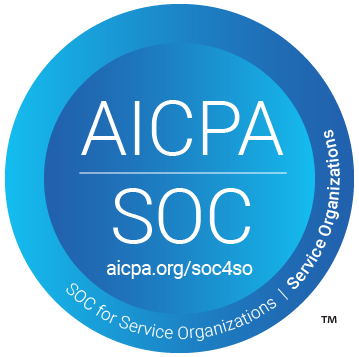Outbound OTIF (on-time, in-full) is one of the most important, if not the most important, contributors to customer satisfaction.
If your orders are on time and in full every time, it will:
- Improve your reputation in the industry
- Reduce friction when it comes to customers buying
- Forge excellent relationships with your customers
And those three factors consistently lead to improved revenue.
A high OTIF rate is one way to ensure your business is doing well without any headaches or logistical issues.
Of course, it’s extremely difficult to achieve a high outbound OTIF without a high inbound OTIF, and that seems out of the control of internal logistics and warehouse managers.
Controlling all aspects of the supply chain seems impossible, but what if there is a way to take control? That’s exactly what we’ll be determining with this blog post.
While a high OTIF may be the ultimate goal, we must consider the cost.
Is it even cost-efficient? How much does it cost to have a super high OTIF?
You might be asking these questions because you’re wondering whether it’s worth it to invest.
But the better question you should be asking is this:
What does it cost your business to have a low outbound OTIF?
Because the cost of failing in this area is typically far greater than the investment you’d make in improving it.
A low OTIF will result in fines, which vary in amount depending on the time of arrival and what was missing from the inventory.
Low OTIFs also lead to a breakdown in trust between you and the customer, and could easily result in a future loss of sales.
Inbound OTIF rates also affect other business KPIs, which we have to consider.
For starters, there are non-warehouse KPIs like cash flow. Paying for stock that’s not delivered means that your finance department has to dedicate time and resources to chasing refunds. If the amounts are significant, it can impact available liquidity and delay other important purchases.
Warehouse KPIs that are affected include shrinkage, inventory accuracy, as well as overall efficiency due to the unpredictability of the loading dock schedule.
What is the Difference Between OTIF, OTD, and “Perfect Order”

OTIF (on-time in-full) tracks the delivery time and everything that was delivered, while OTD (on-time delivery) merely measures delivery times.
If you’re not tracking missing inventory, your OTIF rate is actually just an OTD rate.
In an ideal world, everything would be measured against “Perfect Order”. It tracks delivery time, inventory, condition of inventory, and paperwork. You need the most accurate data at your fingertips at all times for “Perfect Order” metrics to be used.
The main problem with OTIF is that there are multiple definitions of what “on time” and “in full” mean.
How is OTIF Calculated?

Different sectors, such as retail, manufacturing, and pharmaceuticals, view and handle OTIF differently.
92% of North American retailers and manufacturers of consumer packaged goods surveyed by McKinsey believed that an industry standard for OTIF would be highly valuable.
Currently, 79% of those surveyed measured “Together OTIF (on-time, in-full)”. 79% preferred to measure “Case fill” when it came to the granularity with which they preferred to measure the order fill rate. 67% measured on-time as “Requested delivery date”.
The McKinsey survey determined that a working standard of OTIF included “Case quantity (a) that is delivered (b) to be destination by the requested delivery date (c), calculated as a percentage of the ordered quantity.”
It also included:
- Any product that was delivered inaccurately or in a quantity over and above what was ordered should be disregarded.
- Delivery should be tracked according to when the trucks arrive at the facility to avoid being penalized for any delays that are outside the manufacturer’s control.
- “The requested delivery window should be the delivery date requested at the time of order placement, adjusted for any retailer-caused appointment delay, measured to the end of the working day and with a one-day early allowance.”
What is a Good OTIF Rate?

Now that we’re on the same page about what OTIF means, let’s talk about what a high standard looks like.
As established previously, different industries have different OTIF standards, so it makes sense that their OTIF rates would be different.
Officially, many companies claim they have a 95% OTIF rate or higher, but that’s because they could be twisting the numbers.
In the retail industry, they typically demand an OTIF rate of 97% or better. However, they generally measure this using stock keeping unit (SKU) level, meaning they measure against when the supplier promised the delivery and not when the customer requested it. This gives an inaccurate measurement of customer service and OTIF rates (1).
True numbers throughout sectors are more consistent with the following:
- Raw materials: 25% to 80% (2)
- Automotive components (rubber): 55% (3)
- Chemicals and consumer goods manufacturing: agile supply chains at 94% and others at 87% (4)
- Pharmaceuticals:
- Inbound OTIF pre-2020 - 96%+
- Inbound OTIF in 2020 - Majority 80%-96%, with many companies below 80%
- Outbound OTIF pre-2020 - half over 96% and half between 80% and 96%
- Outbound OTIF in 2020 - fewer than a fifth of businesses at more than 96% (5)
Most companies aim for a 90% OTIF rate. After all, 100% seems impossible with factors beyond your control. However, there is a strong business case for striving to increase your OTIF rate beyond 90% and 95%.
With an OTIF rate of 95% or higher, you’ll improve relationships with your customers, boost your reputation in the business, and win new customers. You won’t have to worry about fines and sales losses due to low OTIF.
How to Hold Partners Accountable for OTIF Deliveries

Dock scheduling is the best way to hold your partners accountable for OTIF deliveries — and drive that number up.
You can incentivize carriers by collecting data about arrival and unloading times and showing them a correlation between punctuality and turnaround time.
You’ll have better inspection and documentation standards in the receiving process. There will be less pressure, more visibility, and more time to complete the process correctly.
You can easily identify any problems with a delivery early in the process and with details.
How to Achieve 99% Outbound OTIF

One thing stands true when striving for over 95% OTIF: high inbound OTIF opens the door to high outbound OTIF.
The one cannot happen without the other.
And for that, you need orderly, data-driven warehouse operations.
Accountability and information sharing with suppliers and customers should be a priority. Some companies hard-wire that discipline by folding their OTIF playbooks into a Supply Chain Center of Excellence, so every site works to the same high standard.
If you can make this happen, you can improve your inbound OTIF rate and drive up your outbound OTIF rate.



